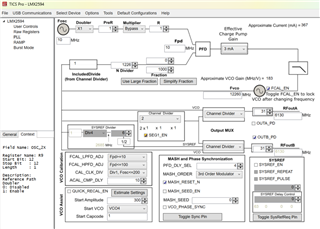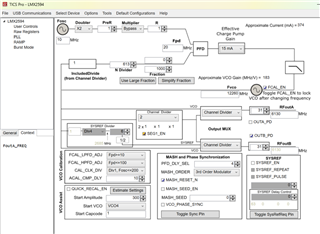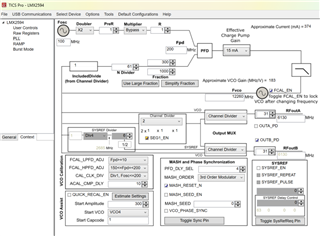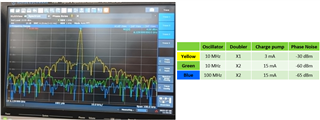Tool/software:
Hi, TI:
I have a question regarding phase noise performance for the LMX2594.
The following figure shows the GUI interface settings of Case1, Case2, and Case3, respectively. The difference between case 1 and case 3 is that Fosc is 10 MHz and 100 MHz. Case 2 is the fine-tuning result of Case 1 (Doubler: X2 and Pump Charge 15mA).
The final figure shows the measurement result of SA, and the yellow line(case 1) is the worst case of the three cases. Since the actual application requires the setting of Case1, I would like to know if there are other settings that can reduce the noise when the doubler is fixed to X1 and the charge pump is fixed to 15mA.
Case1:

Case2:

Case3:


Thanks for your help.
Brian Chiou


